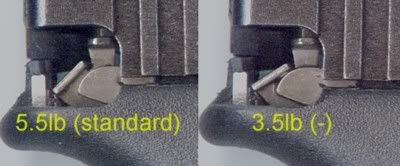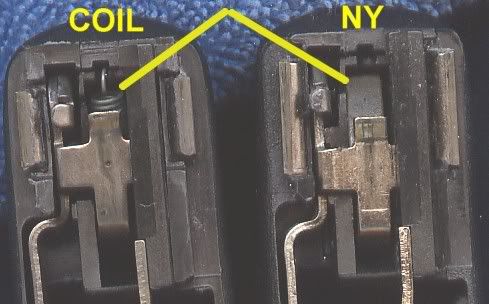Can anyone explain what the trigger connector in my Glock does?
I suppose there are connectors in other guns as well, but I am a Sig, 1911, and CZ man traditionally (forgive me if these have an identical part, but I've taken these down to springs and pins as well and there doesn't seem to be a "connector". I assume it's a striker thang.)
I like to have a grasp on how my pistols function and this is the one part that I haven't quite figured yet. I know how the slide interacts with it on recoil and that it is capable of stoping rearward motion of the trigger bar, but only slightly, as the bar is almost all the way back at that point.
Any experts here? For some reason I'm banned from GLOCKTALK.com Ive never even been a member...
Ive never even been a member...
I suppose there are connectors in other guns as well, but I am a Sig, 1911, and CZ man traditionally (forgive me if these have an identical part, but I've taken these down to springs and pins as well and there doesn't seem to be a "connector". I assume it's a striker thang.)
I like to have a grasp on how my pistols function and this is the one part that I haven't quite figured yet. I know how the slide interacts with it on recoil and that it is capable of stoping rearward motion of the trigger bar, but only slightly, as the bar is almost all the way back at that point.
Any experts here? For some reason I'm banned from GLOCKTALK.com



